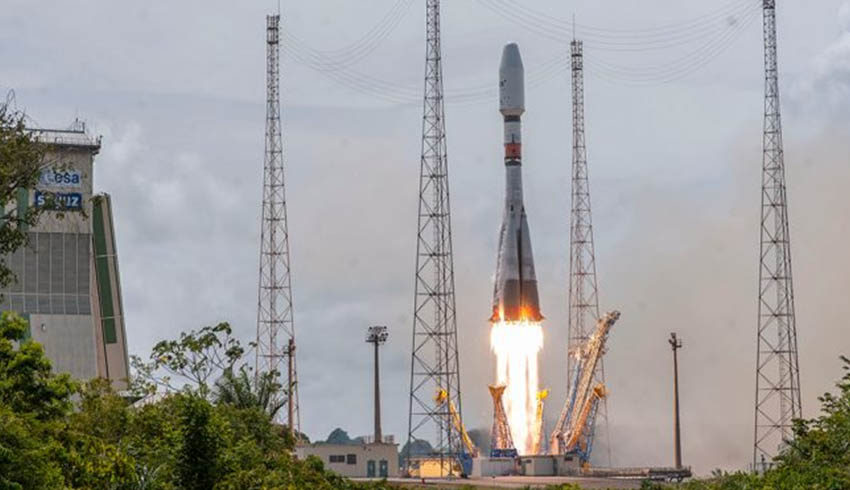
Asia-Pacific remains a key market for Arianespace, having launched 89 satellites to geostationary transfer orbit (GTO) for 17 Asia-Pacific operators from 10 countries – representing a 50 per cent market share.
The pace has continued in 2020, with five satellites launched so far this year for customers in the region.
Missions with the heavy-lift Ariane 5 during 2020 lofted JCSAT-17 and BSAT-4b for Japan, India’s GSAT-30, and GEO-KOMPSAT-2B for South Korea; while Thailand’s NAPA-1 nanosatellite was deployed during the light-lift Vega launcher’s proof of concept flight for Arianespace’s new Small Spacecraft Mission Service.
Overall, Arianespace has performed four launches to date in 2020 from the Guiana Space Center, orbiting 60 satellites; as well as two launches from the Baikonur Cosmodrome, lofting 68 satellites.
In the four decades since Arianespace’s creation in 1980, the company has launched a total of 744 spacecraft, which includes more than half of all telecommunications satellites now in service worldwide.
Arianespace provides guaranteed launch solutions for all types of spacecraft, whether institutional or commercial, to all orbits.
The three launch solutions with Ariane 5, Soyuz and Vega account for:
- 109 launches and 255 satellites orbited for Ariane 5;
- 23 launches from the Guiana Space Center since 2011 and 28 from the Baikonur Cosmodrome in Kazakhstan (via Starsem) for Soyuz with 203 satellites orbited; and
- 16 launches and 82 satellites orbited for Vega.
Arianespace’s order book now includes four satellites to be launched for Asia-Pacific operators:
- One satellite to be deployed by Ariane 5 into GTO in 2021: MEASAT-3d for MEASAT; and
- Three satellites to be launched by Vega/Vega C: KOMPSAT-7 for KARI (South Korea); THEOS-2 for GISTDA (Thailand) and one undisclosed.
Arianespace’s backlog of orders now stands at 47 launches for 25 customers:
- 15 by Ariane 5/Ariane 6;
- 22 by Soyuz; and
- 10 by Vega/Vega C.
The new generation of European launch vehicles is designed to address changing trends in the evolving satellite marketplace. Ariane 6 and Vega C will enable Arianespace to cover all orbits for all sizes of satellites, including constellations and smallsats, thanks to special multiple launch systems (SSMS for Vega/Vega C, and MLS for Ariane 6).
Ariane 6 and Vega C benefit from a long heritage of reliability and enhanced competitiveness – key factors when both institutional and commercial customers make their choice of launch services.
The constellation and small satellite (0-500 kilograms.) markets remain highly active. This trend is expected to continue: according to market projections, 200-300 nanosatellites are to be launched per year during the next decade, with more than 80 per cent expected to be provided through constellation projects. Broadband constellations are a particular game-changer for launch service providers, as they guarantee significant numbers of launches and a continuous level of activity over the years.
Arianespace will be able to respond to market needs through its dual strategy of shared launches on Ariane 6 and Vega/Vega C with MLS and SSMS, and multiple launches for constellations. Its goal is to seek a full range of opportunities in launching mega-constellations.
Arianespace uses space to make life better on Earth by providing launch services and solutions for all types of satellites (institutional and commercial) into all orbits. It has orbited more than 740 satellites since 1980, using its family of three launchers, Ariane, Soyuz and Vega, from launch sites in French Guiana (South America) and Baikonur (central Asia). Arianespace is headquartered in Evry, near Paris, and has a technical facility in Kourou at the Guiana Space Center, Europe’s Spaceport in French Guiana, plus local offices in Washington, DC, Tokyo and Singapore.
Receive the latest developments and updates on Australia’s space industry direct to your inbox. Subscribe today to Space Connect here.









